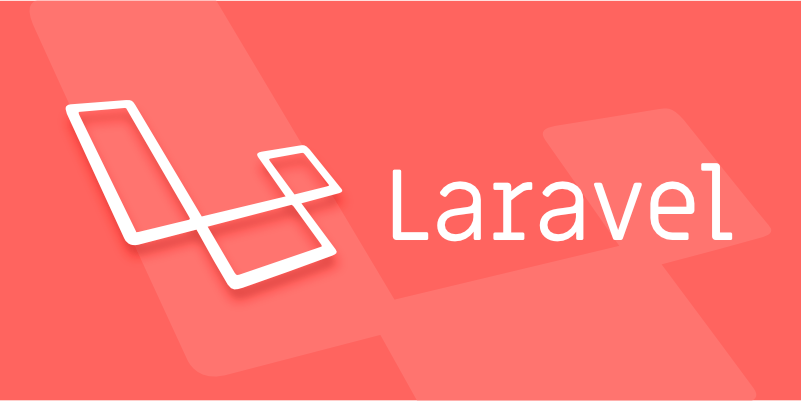Building dynamic interfaces with Laravel Livewire
Jul 02, 2025 pm 03:32 PMLaravel Livewire is an effective tool for building dynamic interfaces. The installation steps are: 1. Install through Composer; 2. Introduce scripts in layout files; 3. Publish config files if configuration is required; 4. Use the Artisan command to generate components. Components are composed of classes and views. The classes process data logic and the views are responsible for rendering. For example, when creating a counter component, the class defines properties and methods, and the views bind interactive events through instructions. Complex interfaces can be implemented through the collaboration of multiple components and communicate using event mechanisms. Overcomponentization should be avoided when using Livewire to reduce performance overhead. Optimization suggestions include: lazy loading of input boxes, cache calculated values, searching for input anti-shake, using them in combination with Alpine.js, and optimizing resource loading in production environments to improve performance and maintainability.

When it comes to building dynamic interfaces in Laravel, Livewire is a solid choice. It lets you create reactive components without leaving the comfort of Laravel's ecosystem. You don't need to write complex JavaScript—just PHP and Blade templates.

Setting Up Livewire
To start using Livewire, you first need to install it via Composer:

composer requires livewire/livewire
Then include the Livewire scripts in your main layout file:
@livewireStyles @livewireScripts
It's also important to publish the config file if needed:

php artisan vendor:publish --tag=livewire-config
This gives you control over things like asset URL handling and middleware settings. Once installed, you can start generating components using Artisan:
php artisan make:livewire Counter
This creates both a PHP class and a Blade view, ready for you to customize.
Creating Interactive Components
A Livewire component usually has two parts: the class and the view. The class holds your data and logic, while the view renders it.
For example, here's a basic counter component:
class Counter extends Component
{
public $count = 0;
public function increment()
{
$this->count ;
}
public function render()
{
return view('livewire.counter');
}
}And in the Blade template:
<div>
<button wire:click="increment"> </button>
<span>{{ $count }}</span>
</div> Clicking the button updates $count without a full page reload. That's Livewire syncing the state behind the scenes.
You can do more than just increment numbers—Livewire supports form inputs, validation, lifecycle hooks, and even file uploads. Just remember: any change to a public property triggers an update.
Handling Complex UIs with Multiple Components
When your interface grows, splitting logic into multiple components make things easier to manage. For instance, you might have a parent component that includes several smaller ones:
<livewire:top-nav /> <livewire:sidebar /> <livewire:main-content />
Each of these components can handle their own state independently. If you need communication between them, Livewire offers events:
// In one component
$this->emit('itemSelected', $itemId);
// In another component
protected $listeners = ['itemSelected'];
public function itemSelected($itemId)
{
$this->selectedItem = Item::find($itemId);
}This keeps things decoupled but still connected when needed.
One thing to watch out for: avoid making everything a Livewire component. Use it where interactivity adds real value, not just for static content. Otherwise, you'll end up with unnecessary overhead.
Performance Tips and Best Practices
Livewire works by sending small AJAX requests on every action. While it's efficient by default, there are ways to keep it snappy:
- Use lazy loading for inputs : Add
wire:model.lazyto reduce the number of updates. - Avoid rendering large lists dynamically : Livewire sends the entire component HTML back each time, so big datasets can get heavy.
- Cache computed values ??: If a value takes time to compute, store it temporarily instead of reccalculating on every render.
- Use debounce for search inputs : Like
wire:model.debounce.500ms="search"to prevent too many rapid calls.
Also, Livewire plays nicely with Alpine.js. So if you need some lightweight client-side behavior, you can mix them without conflict.
If you're deploying to production, make sure to optimize assets:
php artisan livewire:publish --config
This ensures Livewire loads from a CDN or your own asset pipeline, not the package folder.
That's the core of working with Livewire. It's powerful but simple enough to drop into existing apps. The key is knowing when to use it and how to structure your components for maintainability.
The above is the detailed content of Building dynamic interfaces with Laravel Livewire. For more information, please follow other related articles on the PHP Chinese website!

Hot AI Tools

Undress AI Tool
Undress images for free

Undresser.AI Undress
AI-powered app for creating realistic nude photos

AI Clothes Remover
Online AI tool for removing clothes from photos.

Clothoff.io
AI clothes remover

Video Face Swap
Swap faces in any video effortlessly with our completely free AI face swap tool!

Hot Article

Hot Tools

Notepad++7.3.1
Easy-to-use and free code editor

SublimeText3 Chinese version
Chinese version, very easy to use

Zend Studio 13.0.1
Powerful PHP integrated development environment

Dreamweaver CS6
Visual web development tools

SublimeText3 Mac version
God-level code editing software (SublimeText3)

Hot Topics
 What are policies in Laravel, and how are they used?
Jun 21, 2025 am 12:21 AM
What are policies in Laravel, and how are they used?
Jun 21, 2025 am 12:21 AM
InLaravel,policiesorganizeauthorizationlogicformodelactions.1.Policiesareclasseswithmethodslikeview,create,update,anddeletethatreturntrueorfalsebasedonuserpermissions.2.Toregisterapolicy,mapthemodeltoitspolicyinthe$policiesarrayofAuthServiceProvider.
 How do I install Laravel on my operating system (Windows, macOS, Linux)?
Jun 19, 2025 am 12:31 AM
How do I install Laravel on my operating system (Windows, macOS, Linux)?
Jun 19, 2025 am 12:31 AM
Yes,youcaninstallLaravelonanyoperatingsystembyfollowingthesesteps:1.InstallPHPandrequiredextensionslikembstring,openssl,andxmlusingtoolslikeXAMPPonWindows,HomebrewonmacOS,oraptonLinux;2.InstallComposer,usinganinstalleronWindowsorterminalcommandsonmac
 What are controllers in Laravel, and what is their purpose?
Jun 20, 2025 am 12:31 AM
What are controllers in Laravel, and what is their purpose?
Jun 20, 2025 am 12:31 AM
The main role of the controller in Laravel is to process HTTP requests and return responses to keep the code neat and maintainable. By concentrating the relevant request logic into a class, the controller makes the routing file simpler, such as putting user profile display, editing and deletion operations in different methods of UserController. The creation of a controller can be implemented through the Artisan command phpartisanmake:controllerUserController, while the resource controller is generated using the --resource option, covering methods for standard CRUD operations. Then you need to bind the controller in the route, such as Route::get('/user/{id
 How do I customize the authentication views and logic in Laravel?
Jun 22, 2025 am 01:01 AM
How do I customize the authentication views and logic in Laravel?
Jun 22, 2025 am 01:01 AM
Laravel allows custom authentication views and logic by overriding the default stub and controller. 1. To customize the authentication view, use the command phpartisanvendor:publish-tag=laravel-auth to copy the default Blade template to the resources/views/auth directory and modify it, such as adding the "Terms of Service" check box. 2. To modify the authentication logic, you need to adjust the methods in RegisterController, LoginController and ResetPasswordController, such as updating the validator() method to verify the added field, or rewriting r
 How do I use Laravel's validation system to validate form data?
Jun 22, 2025 pm 04:09 PM
How do I use Laravel's validation system to validate form data?
Jun 22, 2025 pm 04:09 PM
Laravelprovidesrobusttoolsforvalidatingformdata.1.Basicvalidationcanbedoneusingthevalidate()methodincontrollers,ensuringfieldsmeetcriterialikerequired,maxlength,oruniquevalues.2.Forcomplexscenarios,formrequestsencapsulatevalidationlogicintodedicatedc
 How do I escape HTML output in a Blade template using {{{ ... }}}? (Note: rarely used, prefer {{ ... }})
Jun 23, 2025 pm 07:29 PM
How do I escape HTML output in a Blade template using {{{ ... }}}? (Note: rarely used, prefer {{ ... }})
Jun 23, 2025 pm 07:29 PM
InLaravelBladetemplates,use{{{...}}}todisplayrawHTML.Bladeescapescontentwithin{{...}}usinghtmlspecialchars()topreventXSSattacks.However,triplebracesbypassescaping,renderingHTMLas-is.Thisshouldbeusedsparinglyandonlywithfullytrusteddata.Acceptablecases
 Selecting Specific Columns | Performance Optimization
Jun 27, 2025 pm 05:46 PM
Selecting Specific Columns | Performance Optimization
Jun 27, 2025 pm 05:46 PM
Selectingonlyneededcolumnsimprovesperformancebyreducingresourceusage.1.Fetchingallcolumnsincreasesmemory,network,andprocessingoverhead.2.Unnecessarydataretrievalpreventseffectiveindexuse,raisesdiskI/O,andslowsqueryexecution.3.Tooptimize,identifyrequi
 How do I mock dependencies in Laravel tests?
Jun 22, 2025 am 12:42 AM
How do I mock dependencies in Laravel tests?
Jun 22, 2025 am 12:42 AM
TomockdependencieseffectivelyinLaravel,usedependencyinjectionforservices,shouldReceive()forfacades,andMockeryforcomplexcases.1.Forinjectedservices,use$this->instance()toreplacetherealclasswithamock.2.ForfacadeslikeMailorCache,useshouldReceive()tod






